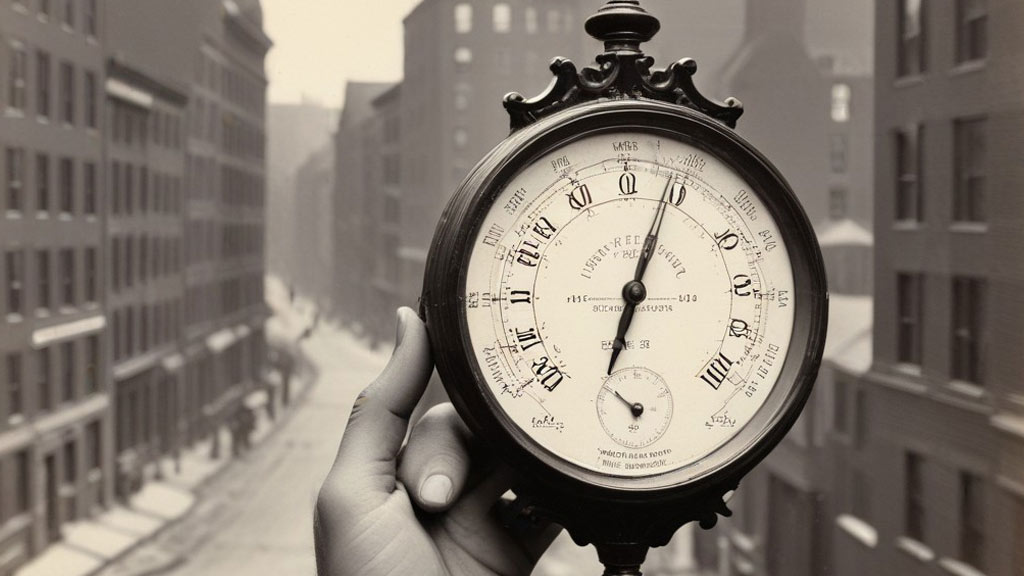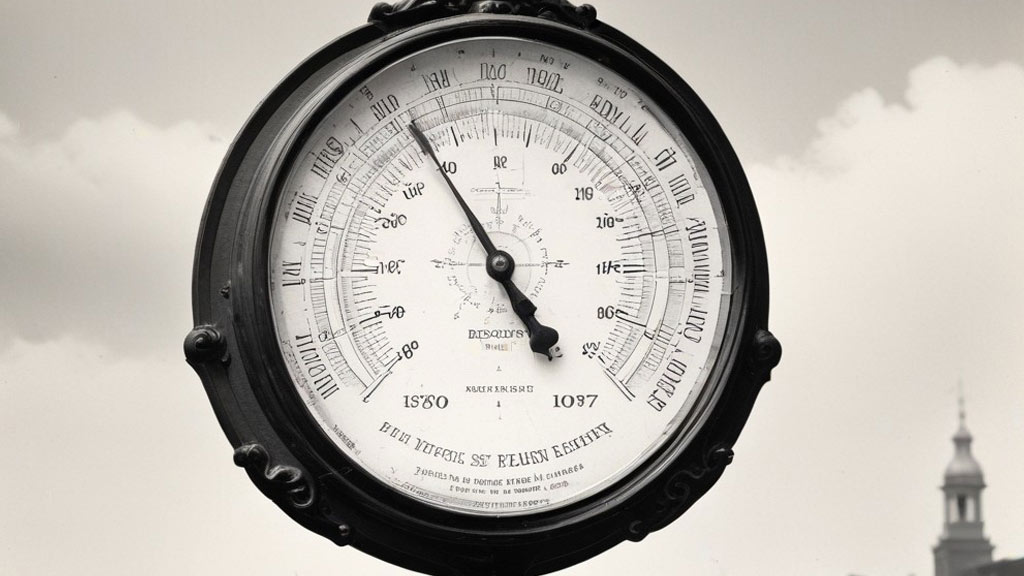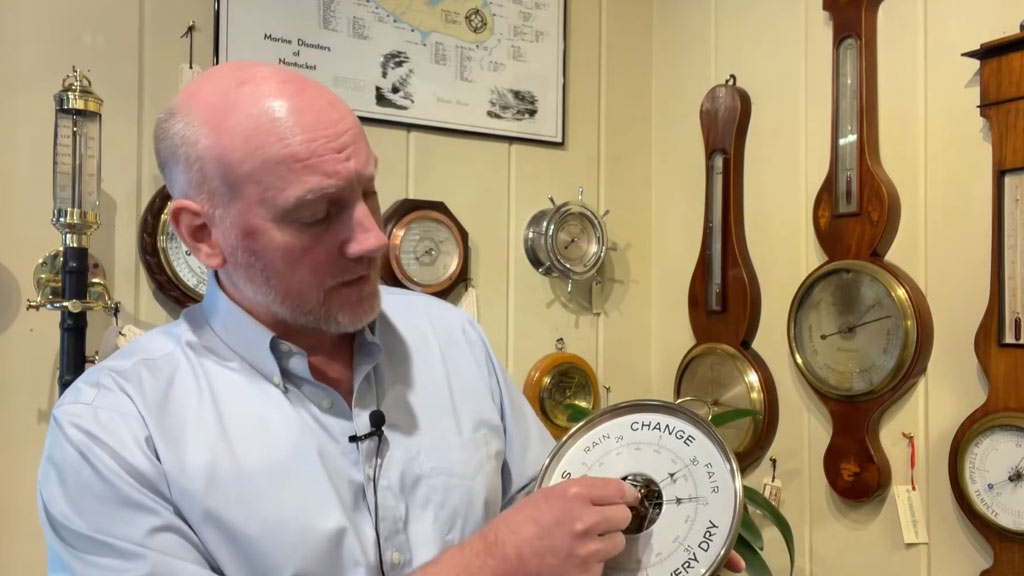The history of barometric pressure in Boston is a testament to the city’s enduring fascination with meteorology and its pivotal role in shaping our understanding of weather dynamics.
Since its early colonial days, Bostonians have meticulously recorded atmospheric pressure variations, using rudimentary instruments to gauge the nuances of the city’s climate.
Over the centuries, this humble beginning has evolved into a sophisticated network of weather observation stations and research institutions, contributing invaluable data to the broader field of meteorology.
From the establishment of the United States Weather Bureau to the digital revolution of the 21st century, Boston’s journey through barometric pressure history reflects not only scientific progress but also the city’s resilience in the face of ever-changing weather patterns.
What Is the Barometric Pressure in Boston?
The barometric pressure in Boston refers to the atmospheric pressure exerted by the weight of air molecules above the city’s surface.
It fluctuates due to changes in weather systems, such as the movement of high and low-pressure areas. Barometric pressure is measured in millibars (mb) or inches of mercury (inHg) and plays a crucial role in weather forecasting.
High-pressure systems typically bring clear skies and stable weather, while low-pressure systems are associated with clouds, precipitation, and potentially stormy conditions.
Understanding the barometric pressure in Boston is essential for predicting weather patterns and preparing for atmospheric changes that affect daily life.
The History of Barometric Pressure in Boston

Barometric pressure, a crucial aspect of meteorology, has long been observed and documented in Boston, a city rich with historical significance and meteorological data.
Since the early days of weather observation, barometric pressure measurements have played a fundamental role in understanding and predicting weather patterns, particularly in a region known for its variable climate like New England.
The history of barometric pressure in Boston traces back to the early colonial era when settlers employed rudimentary weather instruments to monitor atmospheric conditions.
Over the centuries, advancements in technology and the establishment of formal meteorological networks have greatly enhanced our understanding of atmospheric pressure variations in the region.
Below is a table illustrating key moments and milestones in the history of barometric pressure observation in Boston:
| Year | Event | Details |
| 1639 | Early colonial observations | Early colonists in Boston begin recording weather observations, including rudimentary measurements of barometric pressure using simple instruments. |
| 1836 | Establishment of weather network | The Boston Marine Society establishes a network of weather observers along the East Coast, including Boston, to gather meteorological data. |
| 1870 | Formation of the Weather Bureau | The United States Weather Bureau (now known as the National Weather Service) is founded, leading to more standardized and systematic collection of weather data. |
| 1881 | Harvard College Observatory | The Harvard College Observatory begins regular meteorological observations, contributing to the long-term record of barometric pressure data in Boston. |
| 1938 | Impact of the Great New England Hurricane | The Great New England Hurricane of 1938 strikes the region, prompting heightened interest in meteorological research and improved forecasting techniques. |
| 1940s | Technological advancements | Introduction of more sophisticated barometers and recording devices improves the accuracy of barometric pressure measurements in Boston. |
| 1954 | Establishment of Blue Hill Observatory | The Massachusetts Institute of Technology (MIT) establishes the Blue Hill Observatory, a prominent center for atmospheric research, collecting barometric data. |
| 1960s | Integration of computers | Computers begin to be utilized for data processing and analysis, facilitating more efficient handling of barometric pressure data in Boston. |
| 1980s | Development of forecasting models | Advancements in numerical weather prediction lead to the development of models incorporating barometric pressure data for more accurate forecasts. |
| 1990s | Digital revolution | Adoption of digital technology revolutionizes weather observation and forecasting, enabling real-time monitoring and analysis of barometric pressure in Boston. |
| 2000s | Climate change research | Barometric pressure data in Boston becomes integral to climate change research, aiding in the understanding of long-term atmospheric trends. |
| Present | Continued research and monitoring | Boston remains a hub for meteorological research, with institutions actively collecting and analyzing barometric pressure data to improve weather forecasts. |
How Does Barometric Pressure Affect Weather in Boston?

Barometric pressure, the measure of atmospheric pressure exerted by the weight of air molecules, significantly influences weather patterns in Boston.
Understanding how barometric pressure affects weather in this region is essential for predicting changes and preparing for atmospheric conditions.
In Boston, variations in barometric pressure are closely tied to the movement of weather systems, particularly the arrival and departure of high and low-pressure areas.
Here’s how barometric pressure influences weather in Boston:
High-Pressure Systems

When the barometric pressure is higher than usual, a high-pressure system predominates. High-pressure systems typically bring stable weather conditions to Boston.
Clear skies, light winds, and dry weather are often associated with high-pressure systems. During periods of high pressure, Bostonians can expect pleasant, sunny days with minimal cloud cover and little to no precipitation.
Low-Pressure Systems
Conversely, when barometric pressure decreases, a low-pressure system forms. Low-pressure systems are commonly accompanied by unsettled weather conditions in Boston.
Cloudy skies, precipitation (such as rain or snow), and potentially stormy weather are characteristic of low-pressure systems.
As a low-pressure system moves into the region, it can bring significant changes in weather, including rain showers, thunderstorms, or even blizzard conditions during winter months.
Transitioning Weather
Changes in barometric pressure often precede shifts in weather patterns. Rapid drops in pressure, indicating the approach of a low-pressure system, may signal the onset of stormy weather in Boston.
Conversely, rising pressure typically indicates improving weather conditions, with clearing skies and diminishing precipitation.
Temperature Variation
Barometric pressure can also influence temperatures in Boston. High-pressure systems often coincide with cooler temperatures due to clear skies and reduced cloud cover, allowing for more significant radiational cooling at night.
In contrast, low-pressure systems may bring milder temperatures but also increased humidity and cloud cover, which can moderate temperature fluctuations.
Wind Patterns
Pressure gradients between high and low-pressure systems drive wind patterns in Boston. Strong pressure gradients result in stronger winds, while weaker gradients lead to lighter winds.
Understanding these wind patterns is crucial for predicting weather phenomena such as sea breezes along the coast or gusty winds during stormy conditions.
FAQs
When was barometric pressure discovered?
Barometric pressure was first discovered in the 17th century by Evangelista Torricelli, an Italian physicist, in 1643.
What Is the Average Barometric Pressure in Boston During the Summer?
During the summer months in Boston, the average barometric pressure typically ranges between 29.80 inches of mercury (inHg) and 30.20 inHg (1010 millibars to 1020 millibars), reflecting the influence of seasonal weather patterns on atmospheric pressure.
How Does Barometric Pressure Affect Air Quality in Boston?
Barometric pressure can influence air quality in Boston by affecting the dispersion and concentration of pollutants.
High-pressure systems tend to suppress vertical mixing, leading to stagnation of pollutants near the surface and potentially worsening air quality.
In contrast, low-pressure systems promote better dispersion of pollutants, resulting in improved air quality.
What Is the Relationship Between Barometric Pressure and Humidity in Boston?
In Boston, barometric pressure and humidity are interconnected through their influence on weather patterns.
Generally, low-pressure systems are associated with higher humidity levels due to increased moisture content in the atmosphere, leading to cloud formation and precipitation.
Conversely, high-pressure systems often bring drier conditions with lower humidity levels, resulting in clear skies and reduced cloud cover.
Wrap up
Tracing the barometric pressure history of Boston, we unveil a narrative interwoven with resilience, innovation, and scientific inquiry.
From humble colonial beginnings to the digital era, Boston’s journey mirrors the evolution of meteorological understanding globally.
The meticulous data collection efforts of early observers have paved the way for sophisticated forecasting models and climate research today.
Through hurricanes, technological advancements, and changing scientific paradigms, Boston’s commitment to meteorological study remains unwavering.
The city’s contributions to the field continue to inform our understanding of weather patterns and their implications for society.
As we look to the future, Boston’s barometric pressure history serves as a testament to human curiosity and our enduring quest for knowledge.
Jaclyn Lowe